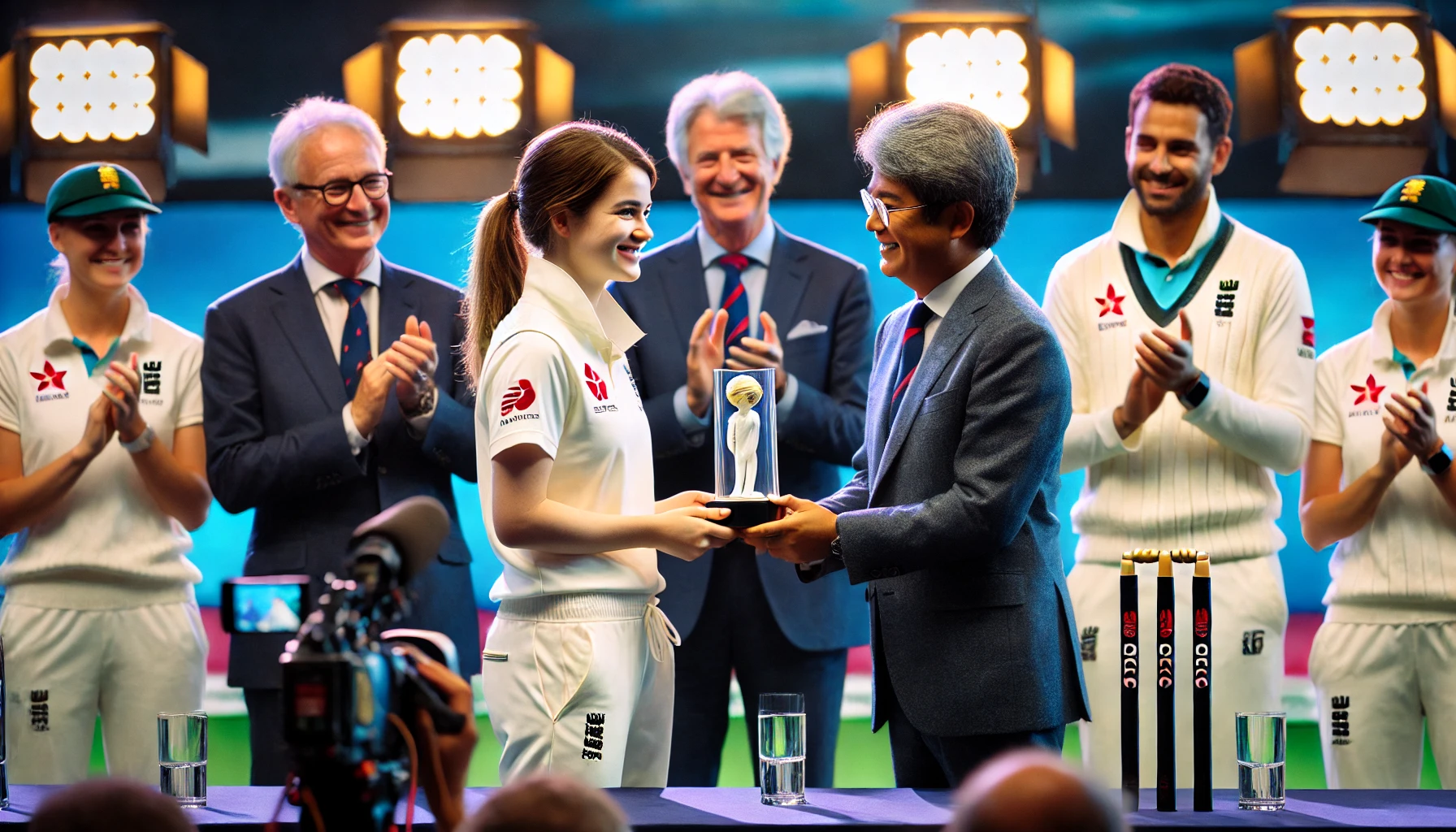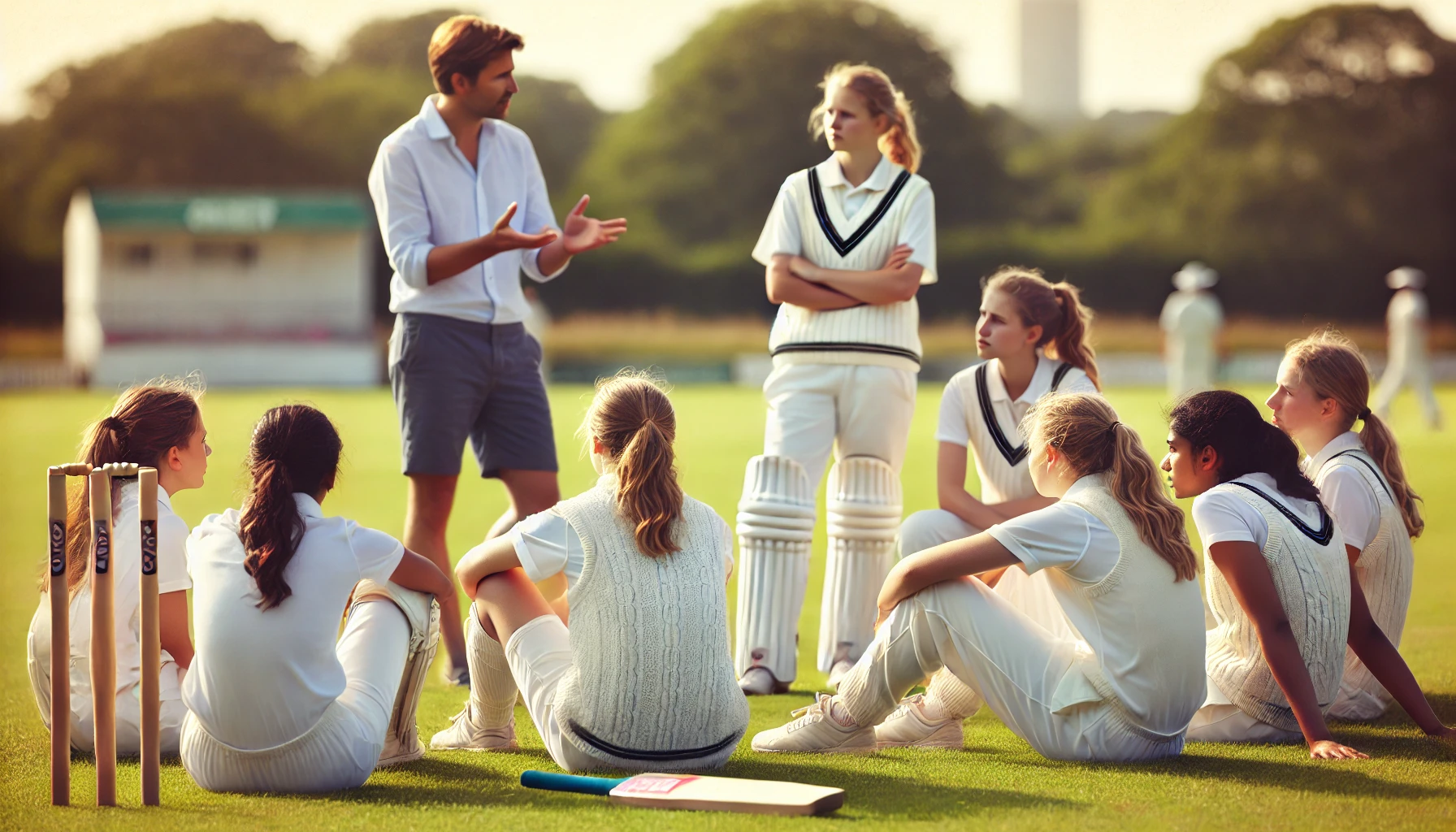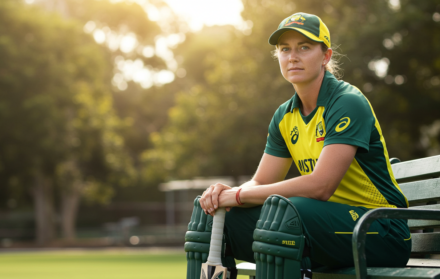
The Support of Governing Bodies in Women’s Cricket
In recent years, the support of governing bodies in women’s cricket has become increasingly vital to the growth and development of the sport. As the world of cricket continues to evolve, the spotlight on women’s cricket has intensified, shedding light on both the progress made and the challenges that still need to be addressed. For decades, women cricketers have faced unique obstacles that have often hindered their ability to compete on equal footing with their male counterparts. Addressing these challenges faced by women cricketers has become a primary focus for governing bodies, which play a crucial role in creating an environment where female athletes can thrive.
One of the most significant areas where governing bodies have made an impact is in promoting gender equality in women’s cricket. Initiatives aimed at leveling the playing field have led to greater visibility and opportunities for women cricketers, but there is still much work to be done. The push for equal recognition, sponsorship, and pay has been a key driver in the ongoing transformation of the sport, ensuring that women’s cricket continues to gain momentum on the global stage.
The importance of sponsorship opportunities in women’s cricket cannot be overstated. As more brands and organizations recognize the potential of women’s cricket, sponsorship deals have begun to flourish, providing much-needed financial support that fuels the growth of the sport. This backing from sponsors, often facilitated by governing bodies, has enabled female cricketers to access better training facilities, equipment, and competitive opportunities, which are essential for their development and success.
Moreover, the ongoing push for equal pay in women’s cricket reflects a broader movement towards fairness and equality in sports. Governing bodies have been instrumental in advocating for pay equity, recognizing that financial incentives are not just a matter of fairness but also a crucial factor in attracting and retaining talent. As the debate over pay parity continues, it is clear that the support of governing bodies will be critical in achieving lasting change.
Finally, the importance of fan support in women’s cricket cannot be overlooked. Governing bodies have worked tirelessly to engage fans, understanding that a strong fan base is the lifeblood of any sport. Through strategic marketing campaigns, enhanced media coverage, and accessible events, they have helped to build a loyal following that not only supports the players but also drives the overall growth of the sport.
The role of governing bodies in women’s cricket is multifaceted and essential for the continued advancement of the sport. By addressing challenges, promoting gender equality, securing sponsorship, advocating for equal pay, and engaging fans, these organizations have laid the foundation for a bright future in women’s cricket. As the sport continues to grow, the sustained support of governing bodies will be key to ensuring that women cricketers can achieve their full potential on the global stage.
The ICC’s Pioneering Role in Women’s Cricket Development

The International Cricket Council (ICC) has been at the forefront of promoting and developing women’s cricket on a global scale. As the sport’s leading governing body, the ICC has recognized the immense potential of women’s cricket and has implemented strategic initiatives to elevate the game. Their efforts have been instrumental in transforming women’s cricket from a relatively niche sport to one that commands international attention and respect.
One of the ICC’s most significant contributions has been the organization and promotion of major tournaments like the ICC Women’s Cricket World Cup and the ICC Women’s T20 World Cup. These tournaments have provided female cricketers with a global platform to showcase their talents and have significantly increased the visibility of women’s cricket. The ICC’s decision to invest in the promotion and broadcasting of these events has been pivotal in attracting new fans and sponsors, which in turn has helped to grow the sport.
Beyond tournaments, the ICC has also focused on improving the infrastructure and resources available to women’s cricket. This includes funding for grassroots programs, coaching, and development initiatives that aim to nurture young talent. By providing these essential resources, the ICC ensures that women and girls have the same opportunities as their male counterparts to develop their skills and pursue cricket as a career.
The ICC’s commitment to gender equality has also been evident in its efforts to secure equal prize money for women’s tournaments and to promote women’s cricket alongside men’s cricket. The ICC’s initiatives, such as Women’s Cricket Month, highlight the achievements of female cricketers and work towards shifting public perceptions, helping to create a more inclusive environment within the sport.
The ICC’s support has been a driving force behind the rapid growth and development of women’s cricket. Their commitment to providing equal opportunities, promoting the game, and investing in infrastructure has laid a strong foundation for the future of women’s cricket globally. The ICC’s pioneering role continues to be essential as the sport evolves and gains further recognition on the world stage.
National Cricket Boards: Key Drivers of Women’s Cricket Growth
National cricket boards are crucial in supporting and advancing women’s cricket at the domestic level. These governing bodies are responsible for creating a robust framework that nurtures female talent, provides competitive opportunities, and ensures that women’s cricket receives the attention it deserves. In recent years, many national cricket boards have made significant strides in developing women’s cricket, setting the stage for the sport’s continued growth.
One of the most impactful ways national cricket boards have supported women’s cricket is through the establishment and expansion of domestic leagues. For instance, Cricket Australia’s Women’s Big Bash League (WBBL) and the England and Wales Cricket Board’s (ECB) Women’s Super League (WCSL) have been instrumental in providing professional platforms for female cricketers. These leagues have not only elevated the standard of play but have also garnered substantial media coverage and fan engagement, thereby raising the profile of women’s cricket.
Additionally, national cricket boards have prioritized grassroots initiatives to encourage more girls to take up cricket from a young age. Programs such as the ECB’s “Chance to Shine” and Cricket Australia’s “Growing Cricket for Girls” aim to increase participation and ensure a steady pipeline of talent. These programs focus on introducing cricket in schools, offering coaching clinics, and organizing youth competitions, all of which are essential for the long-term sustainability of women’s cricket.
National cricket boards have also been at the forefront of advocating for better pay and working conditions for female cricketers. Efforts to close the gender pay gap in cricket have gained momentum, with countries like New Zealand and Australia leading the way by offering equal pay to their male and female cricketers. These advancements not only improve the livelihoods of female athletes but also send a strong message about the importance of gender equality in sports.
National cricket boards play a vital role in the development of women’s cricket. By establishing professional leagues, supporting grassroots initiatives, and advocating for equal pay, these governing bodies are helping to create a more equitable and competitive environment for female cricketers. The continued efforts of national cricket boards are essential for ensuring that women’s cricket continues to grow and thrive.
The Impact of Sponsors and Corporate Partnerships on Women’s Cricket

Sponsors and corporate partnerships have become increasingly important in the development and promotion of women’s cricket. The financial support and visibility provided by these entities have been crucial in elevating the sport and ensuring its sustainability. As more companies recognize the value of associating with women’s cricket, their contributions are helping to transform the sport into a commercially viable and globally recognized entity.
One of the most significant ways in which sponsors have supported women’s cricket is through direct funding of tournaments and leagues. Major brands have stepped up to sponsor events like the ICC Women’s Cricket World Cup and the Women’s Big Bash League (WBBL), providing the financial backing needed to organize and promote these competitions. This support has been instrumental in ensuring that women’s cricket receives the same level of professionalism and exposure as men’s cricket. The presence of high-profile sponsors not only boosts the prestige of these events but also attracts new audiences, further expanding the sport’s reach.
Corporate partnerships have also played a key role in enhancing the visibility of women’s cricket. Through strategic marketing and media campaigns, sponsors have helped to bring women’s cricket into the mainstream. For instance, the ECB’s partnership with NatWest has been pivotal in promoting the women’s game through initiatives like the #NoBoundaries campaign, which aims to increase inclusivity and diversity in cricket. Such campaigns have been successful in changing public perceptions of women’s cricket and encouraging more fans to engage with the sport.
In addition to supporting events and marketing campaigns, corporate partnerships have provided valuable opportunities for individual female cricketers. Endorsement deals with major brands have allowed top players to build their personal brands, gain financial stability, and become role models for young girls aspiring to play cricket. Players like Ellyse Perry and Harmanpreet Kaur, who have secured sponsorships with global brands, are now recognized not only for their on-field achievements but also for their influence off the field.
Moreover, sponsors and corporate partners have increasingly recognized the importance of supporting grassroots initiatives. Many companies have invested in programs that aim to increase participation in women’s cricket at the grassroots level. These initiatives are essential for ensuring that the sport remains accessible to girls from all backgrounds and for building a strong foundation for the future of women’s cricket.
The impact of sponsors and corporate partnerships on women’s cricket has been profound. Through financial support, marketing campaigns, and endorsement deals, these entities have played a crucial role in elevating the sport and ensuring its continued growth. As more companies invest in women’s cricket, the sport will continue to gain the recognition and resources it needs to thrive on a global scale.
Media Coverage: A Catalyst for the Growth of Women’s Cricket
Media coverage has been a powerful catalyst in the rise of women’s cricket, playing a critical role in increasing the sport’s visibility and attracting a broader audience. The support of media outlets, broadcasters, and digital platforms has been instrumental in bringing women’s cricket to the forefront, ensuring that the achievements of female cricketers are celebrated and that the sport gains the recognition it deserves.
One of the most significant developments in media coverage of women’s cricket has been the increased availability of live broadcasts and streaming services. Major tournaments like the ICC Women’s Cricket World Cup and domestic leagues such as the Women’s Big Bash League (WBBL) are now regularly broadcast on television and streamed online, allowing fans worldwide to watch the matches live. This accessibility has been crucial in growing the fan base for women’s cricket and in giving the sport the exposure it needs to attract sponsors and increase its commercial viability.
In addition to live broadcasts, media coverage of women’s cricket has expanded to include highlights, in-depth analysis, and feature stories across various platforms. Sports news outlets and digital media have increasingly dedicated space to covering women’s cricket, providing fans with comprehensive coverage of the sport. This increased attention has helped to build narratives around the game, creating storylines that engage fans and keep them invested in the sport. The media’s role in highlighting the journeys and achievements of female cricketers has also been essential in challenging stereotypes and promoting gender equality in sports.
Social media has also played a pivotal role in amplifying the reach and impact of women’s cricket. Platforms like Twitter, Instagram, and YouTube have become essential tools for promoting the sport, allowing players, teams, and governing bodies to engage directly with fans. Social media provides real-time updates, behind-the-scenes content, and interactive experiences that keep fans connected to the sport beyond just the matches. The viral nature of social media has enabled key moments from women’s cricket to reach a global audience quickly, further elevating the sport’s profile.
However, while progress has been made, there is still a disparity in media coverage between men’s and women’s cricket. Continued efforts are needed to ensure that women’s cricket receives equal attention and representation in the media. Initiatives aimed at increasing media coverage, such as dedicated women’s cricket segments on sports networks and targeted social media campaigns, are essential for bridging this gap and ensuring that women’s cricket continues to grow in popularity.
Through live broadcasts, comprehensive coverage, and social media engagement, the media has helped to bring the sport to a wider audience and ensure that female cricketers receive the recognition they deserve. As media coverage continues to expand and evolve, it will play an essential role in the ongoing development and success of women’s cricket.
Grassroots Development: The Foundation of Women’s Cricket

Grassroots development is the cornerstone of any sport, and in women’s cricket, it is vital for nurturing young talent and ensuring the sport’s long-term growth. Governing bodies, national cricket boards, and local organizations have been actively working to increase participation in women’s cricket at the grassroots level. These initiatives focus on making the sport accessible, enjoyable, and engaging for girls of all ages, creating a pathway from beginner to elite levels.
One of the most successful grassroots programs is the ECB’s “All Stars Cricket” initiative, which introduces children aged 5 to 8 to the basics of cricket through fun, game-based activities. The program has been instrumental in attracting young girls to the sport, providing them with a positive first experience of cricket. By focusing on enjoyment and participation, “All Stars Cricket” helps to build a strong foundation for the future of women’s cricket in England.
Similarly, Cricket Australia’s “Growing Cricket for Girls” program aims to boost female participation at the grassroots level. The program provides funding to clubs and schools to establish girls’ teams and competitions, ensuring that young female cricketers have the same opportunities to play and develop their skills as boys. This initiative also includes coach education programs to ensure that coaches are equipped with the knowledge and skills needed to support female players effectively.
Grassroots initiatives often extend beyond just playing the game. They include efforts to engage parents, communities, and schools in supporting young female cricketers. This holistic approach ensures that girls have the support they need to pursue cricket at higher levels. For instance, the Board of Control for Cricket in India (BCCI) has focused on creating more accessible cricket infrastructure in schools and local communities, ensuring that young girls can easily access facilities and coaching.
The impact of these grassroots programs is already being felt, with a growing number of girls taking up cricket and progressing through the ranks to represent their regions and countries. The success stories of female cricketers who have come through these programs serve as powerful role models, inspiring the next generation to pursue the sport. The visibility of these players in both domestic and international cricket further encourages young girls to take up the sport, knowing that there is a clear pathway to success.
Grassroots development is the foundation of women’s cricket, providing the building blocks for the sport’s future growth and success. Through initiatives that introduce young girls to cricket, support their development, and create pathways to elite levels, these programs ensure that women’s cricket remains vibrant and competitive. The ongoing commitment to grassroots development will be key to ensuring that women’s cricket continues to thrive and inspire future generations of players.
The Future of Women’s Cricket: Sustaining Growth with Governing Body Support
The future of women’s cricket is bright, thanks to the unwavering support of governing bodies, national cricket boards, sponsors, media, and grassroots initiatives. Each of these stakeholders plays a crucial role in driving the growth and development of the sport, ensuring that women and girls have the opportunity to play cricket at all levels and that the sport continues to gain recognition and popularity.
With continued investment and support, women’s cricket is poised to reach new heights in the coming years. This includes the expansion of professional leagues, increased media coverage, and greater visibility for female cricketers on the global stage. As more young girls are inspired to take up the sport, the talent pool will continue to grow, leading to higher levels of competition and success for women’s cricket.
The push for gender equality in sports also means that the gap between men’s and women’s cricket will continue to narrow. Efforts to ensure equal pay, better working conditions, and equal media representation are crucial in making cricket a viable and attractive career option for women. As these initiatives gain momentum, we can expect to see more female cricketers gaining the recognition and respect they deserve.
Furthermore, the ongoing support for grassroots development will ensure that the pipeline of talent remains strong, with more girls having the opportunity to play cricket from a young age. This will not only increase participation but also ensure that the next generation of female cricketers is well-equipped to compete at the highest levels.
The future of women’s cricket is full of promise, with continued support from governing bodies playing a key role in its success. As the sport continues to grow in popularity and recognition, the collective efforts of all stakeholders will be essential in ensuring that women’s cricket continues to thrive and inspire future generations. The journey ahead is one of excitement and opportunity, and with sustained support, women’s cricket is set to become a cornerstone of the global sporting landscape.
The Crucial Role of Governing Bodies in Advancing Women’s Cricket

The growth and success of women’s cricket have been significantly bolstered by the support and commitment of governing bodies worldwide. These organizations play a pivotal role in shaping the future of the sport, ensuring that women’s cricket receives the recognition, resources, and opportunities it deserves. As women’s cricket continues to gain momentum, the contributions of governing bodies are more important than ever in driving the sport forward.
One of the most impactful ways governing bodies have supported women’s cricket is through increased investment and resource allocation. By providing funding for grassroots programs, professional leagues, and international competitions, these organizations have helped to create a more robust infrastructure for women’s cricket. This investment has not only elevated the standard of play but also inspired a new generation of female cricketers who now see a viable career path in the sport.
Governing bodies have also been instrumental in promoting visibility and media coverage for women’s cricket. By negotiating broadcasting deals, organizing high-profile tournaments, and leveraging social media platforms, these organizations have brought the sport into the global spotlight. The increased visibility has led to greater fan engagement, sponsorship opportunities, and commercial partnerships, all of which are crucial for the long-term sustainability and growth of women’s cricket.
Moreover, the support of governing bodies has been key in advocating for gender equality within the sport. Initiatives such as equal pay, improved facilities, and expanded opportunities for women’s teams have been championed by these organizations, helping to level the playing field and ensure that female cricketers receive the same respect and opportunities as their male counterparts. This commitment to equality is not only vital for the integrity of the sport but also serves as a powerful message that women’s cricket is valued and respected at all levels.
The support of governing bodies is indispensable to the ongoing development and success of women’s cricket. Through investment, promotion, and advocacy, these organizations have played a crucial role in transforming the landscape of the sport, creating a brighter and more equitable future for female cricketers worldwide. As women’s cricket continues to grow, the ongoing support of governing bodies will remain essential in ensuring that the sport reaches new heights and continues to inspire future generations of players and fans.





